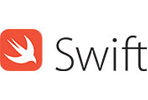Author: Navalkishor
Date: 16-10-2024

The agricultural industry is undergoing a massive digital transformation with the rise of mobile applications that help farmers and agribusinesses optimize their processes, increase productivity, and reduce operational costs. If you're planning to create an agriculture app, understanding the cost factors is essential. In this blog, we will explore the various elements that contribute to the cost of developing an agriculture app, and how partnering with a mobile app development company India or an app development company India can help you get the best value for your investment.
Table of Contents
- Importance of Agriculture Apps in Modern Farming
- Factors Influencing the Cost of Developing an Agriculture App
- Key Features of an Agriculture App
- Development Process and Technology Stack
- Cost Estimation for Developing an Agriculture App
- Partnering with a Mobile App Development Company India
- Conclusion
Importance of Agriculture Apps in Modern Farming
As technology continues to advance, farmers and agribusinesses are adopting digital tools to enhance productivity and efficiency. Agriculture apps provide real-time data, weather forecasts, crop monitoring, and financial management solutions to help farmers make better decisions. The benefits of agriculture apps include:
- Improved Efficiency: Automating manual tasks and providing data-driven insights that improve farming techniques.
- Better Resource Management: Optimizing the use of water, fertilizers, and pesticides through intelligent recommendations.
- Data Collection: Gathering crop and soil data to monitor farm performance over time.
- Cost Savings: Reducing waste, optimizing operations, and lowering overall farming costs.
- Market Access: Connecting farmers directly with buyers and suppliers, eliminating intermediaries.
Factors Influencing the Cost of Developing an Agriculture App
The cost of developing an agriculture app depends on various factors. These factors determine the complexity and scope of the project. Here are the key factors that influence the cost:
1. App Complexity
The complexity of the app plays a crucial role in determining the cost. A basic agriculture app with limited functionality will cost significantly less than a fully-featured app with complex algorithms for crop prediction and resource management.
2. Features and Functionality
The more features your app offers, the higher the cost. Here are some features that might be included in an agriculture app:
- Weather Forecasting
- Soil and Crop Monitoring
- Irrigation Scheduling
- Fertilizer and Pesticide Recommendations
- Supply Chain Management
- Market Price Tracking
- Farmer-to-Marketplace Integration
3. Platform Choice
Whether you choose to develop the app for Android, iOS, or both platforms will affect the cost. Developing for multiple platforms requires more resources, but it also allows you to reach a broader audience.
4. UI/UX Design
A well-designed user interface (UI) and user experience (UX) are critical for the success of your app. Custom designs, animations, and intuitive navigation will increase the development cost but offer a superior user experience.
5. Location of the Development Team
The location of your development team can significantly influence the cost of the app. Hiring a mobile app development company in India or an app development company in India can help reduce costs due to lower labor rates compared to Western countries, without compromising on quality.
6. Development Time
The time required to develop an app also impacts the overall cost. A basic agriculture app may take 3-6 months to develop, while a more complex app can take 9-12 months or longer.
Key Features of an Agriculture App
To create a successful agriculture app, certain features are essential. These features will help farmers and agribusinesses perform better and make data-driven decisions. Below is a list of key features:
1. Weather Forecasting
Providing real-time weather updates and long-term forecasts helps farmers plan their activities, such as planting, irrigating, and harvesting.
2. Crop Management
Farmers can monitor crop growth, check soil health, and receive alerts for potential diseases or pests.
3. Irrigation Management
Using data from sensors, the app can schedule irrigation times to ensure that crops receive the right amount of water at the optimal time.
4. Fertilizer and Pesticide Recommendations
Provide farmers with precise recommendations on when and how much fertilizer or pesticide to use based on soil and crop conditions.
5. Marketplace Integration
Connect farmers with buyers and sellers, allowing them to track market prices, sell products directly, and purchase farming supplies more efficiently.
Development Process and Technology Stack
The development process for an agriculture app involves several stages, from planning to deployment. Choosing the right technology stack is crucial for ensuring that your app is robust, scalable, and user-friendly. Below are the main stages of app development:
1. Planning and Market Research
The first step is to conduct thorough market research to understand the needs of your target audience. This stage also involves defining the app’s features, functionality, and monetization strategy.
2. UI/UX Design
During this phase, the design team creates wireframes and prototypes to visualize how the app will look and function. A user-friendly design is essential for engaging users and improving app usability.
3. App Development
The app development process involves coding the frontend (user interface) and backend (server, database) of the app. Here’s a sample technology stack:
| Component | Technology |
|---|---|
| Frontend | React Native, Flutter, Swift (iOS), Kotlin (Android) |
| Backend | Node.js, Laravel, Django |
| Database | MySQL, PostgreSQL, MongoDB |
| Cloud Hosting | AWS, Google Cloud, Microsoft Azure |
| APIs | Weather API, GPS API, Payment Gateway API |
4. Testing
Testing is a crucial stage to identify bugs, performance issues, and security vulnerabilities. The app must undergo both manual and automated testing before it is launched.
5. Deployment
Once the app is tested and refined, it’s ready for deployment to the App Store (iOS) or Google Play Store (Android). Post-launch maintenance and updates will be necessary to fix any issues and introduce new features.
Cost Estimation for Developing an Agriculture App
The cost of developing an agriculture app varies depending on the features, complexity, and platform. Below is a rough cost estimate based on different app complexity levels:
| App Type | Cost Range | Time Frame |
|---|---|---|
| Basic Agriculture App | $15,000 - $30,000 | 3-6 months |
| Moderate Agriculture App | $30,000 - $70,000 | 6-9 months |
| Advanced Agriculture App | $70,000 - $150,000 | 9-12 months |
For businesses looking to develop a high-quality app at an affordable rate, partnering with a mobile app development company India or an app development company India can help achieve the best results.
Partnering with a Mobile App Development Company in India
India is home to some of the world’s most skilled app developers, offering cost-effective solutions for agriculture apps. Here are some advantages of working with an app development company in India:
- Cost Savings: Development costs in India are lower compared to Western countries.
- Skilled Workforce: India has a large pool of talented developers with expertise in modern technologies.
- Quick Turnaround Time: Faster project delivery thanks to a large number of skilled developers.
- Post-launch Support: Many companies offer long-term support and maintenance services.
Conclusion
Developing an agriculture app is a great way to modernize farming practices and improve efficiency in the agricultural industry. By understanding the key factors that influence the cost and working with a reputable mobile app development company in India, you can create a powerful app that drives results while staying within your budget.
39Your choice of weapon
Build your Apps for any Platform
Latest Blogs
Related Services

Agritech App Development Company | Smart Farming & Innovative Solutions
Posted On: 20-Aug-2024
Category: agritech
We to code. It's our passion










you can also reach us at our given
email address or phone number.




